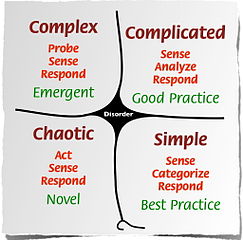I’ve been reading a few books about schools, since my lad’s made the transition from elementary to middle school and it’s been a bit of a battle. When he’s being set assignments like coloring in a poster on math facts, I’m a wee bit concerned. John Taylor Gatto’s Dumbing Us Down was a wakeup call (he won NY teacher of the year for a couple of years, and insightfully (and incitefully) criticizes our current school system. So, when I noticed that Daniel Willingham (who’ve I talked about before) had a book out, I checked it out.
His Why Don’t Students Like School sounded like another tirade against schools, but it’s more positive than that. The subtitle tells you more: “A cognitive scientist answers questions about how the mind works and what it means for your classroom”. It follows a format of:
- question related to successful learning through teaching
- the cogntive science research that underpins this question
- specific recommendations for improving teaching
Fortunately, I could just skim the second part, which is the meat of the book, courtesy of my own PhD in cognitive science, and it was review. But what really struck home was how he (as reviewers repeatedly point out) uses “clear and compelling language” to help the audience really understand what’s important. He’s got great examples, and makes a large chunk of cognitive research comprehensible. Which is not to say it’s a light read, but it’s accessible and clear.
More importantly, the third part of each chapter, his conclusions, are very concrete and actionable. If teachers followed these guidelines, they’d have happier learners and better learning outcomes. What more do you want? (Ok, well, curriculum reform, but this is aimed at teachers.)
He covers a lot of ground. In nine chapters (this isn’t a long book, just deep and relevant), he covers motivation, learning styles, cognitive skills, and more. He answers the core questions and the ancillary questions that emerge. And, no, I don’t agree with him on quite all of it (e.g. on making content meaningful, he’s concerned that too familiar or interesting tasks may overwhelm the intrinsic lesson), but I suspect we’d find if we sat down that we’re agreeing furiously.
I have to say that if all my children’s teachers read this book, their schooling would be a lot better. If all our children’s teachers read this book, schools would be a lot better. So, if you’re a teacher, read this book. If you work with teachers, know teachers, or influence teachers, get them to read this book. And if you design learning experiences, even if you don’t actually teach, you should read this book.
Cognitive science research oriented towards making better learning, in a digestable form. It doesn’t get much better than this. I have no higher praise for a book than “I wish I’d written it”, and I do. Highly recommended.

 Ross reiterated the notion that the current context is a state of increasing change. Things are moving faster, and the chaotic reality underpinning our existence is being brought into highlight more and more. He talked about how commoditization is a driving economic factor, the fact that others can reproduce what you create quickly, so there’s incredible pressure to have to build more on top. I afterward asked him and he supported my contention that optimal execution is only the price of entry, and that continual innovation and delivering a seamless customer experience will be the differentiator.
Ross reiterated the notion that the current context is a state of increasing change. Things are moving faster, and the chaotic reality underpinning our existence is being brought into highlight more and more. He talked about how commoditization is a driving economic factor, the fact that others can reproduce what you create quickly, so there’s incredible pressure to have to build more on top. I afterward asked him and he supported my contention that optimal execution is only the price of entry, and that continual innovation and delivering a seamless customer experience will be the differentiator.